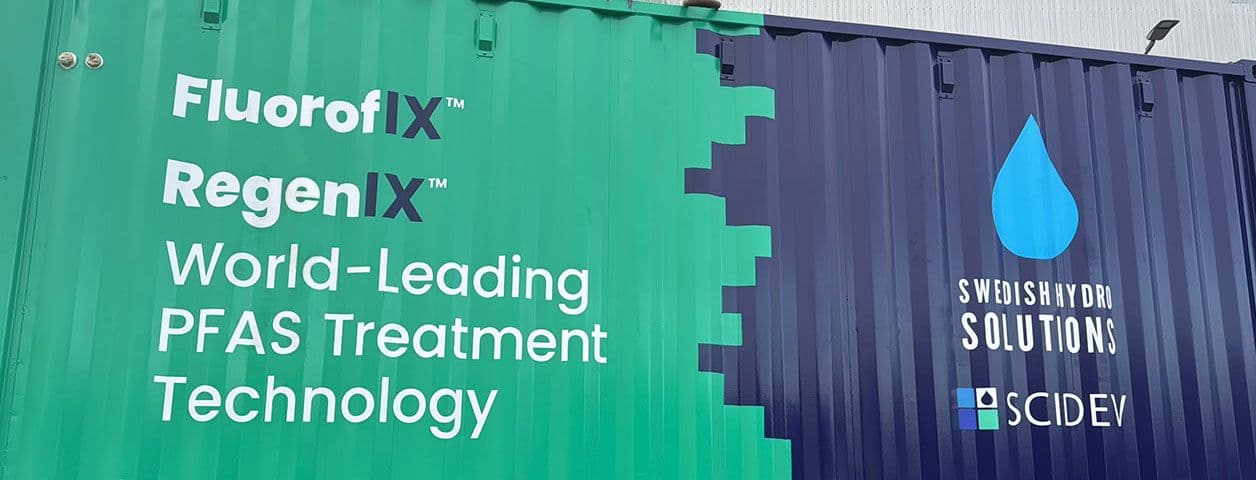
Sustainable water treatment – from north to south
25.04.24
A new water treatment system was recently commissioned to address PFAS contamination associated with tunnel construction—this time at a major industrial site in northern Sweden. This means we now operate water treatment facilities from the northernmost to the southernmost parts of the country, continuing our efforts to provide sustainable water treatment solutions across Sweden.
The project began with a joint meeting between us and the client at the end of 2024, with a focus on PFAS contamination. During the meeting, it was revealed that the infiltrating water from the tunneling contained elevated levels of PFAS11. Sampling results showed concentrations ranging from 878 ng/L to 1,140 ng/L.
Site visit to assess installation area
In February this year, a site visit was carried out to assess the available installation space at the industrial facility and to discuss the potential need for pre-treatment equipment, such as chemical precipitation and flocculation.
At this stage, sampling showed low levels of metal contaminants and suspended solids, which meant that no pre-treatment equipment was required. However, at the start of the project, the client also needed to pump water from the tunnel excavation. As a result, just one week after installation, our dosing equipment and a lamella separator were connected to the system to remove particles before the subsequent filtration stages.
Facility focused on PFAS removal
The installed system is designed to handle up to 9 m³/h, with a focus on PFAS removal using activated carbon filters. It includes two baffled 24 m³ collection containers, four pressurized carbon filters, and a particle filter. The carbon filters are configured in both series and parallel, which optimizes the lifespan of the filter media and minimizes the frequency of replacement in the event of breakthrough.
The majority of the PFAS contamination consists of long-chain PFSA compounds, resulting in activated carbon being an effective treatment choice for this project.
The system was delivered in April and will remain in operation for an indefinite period.


